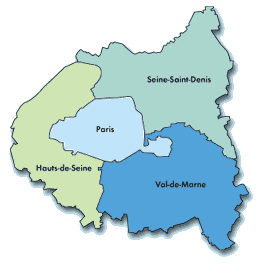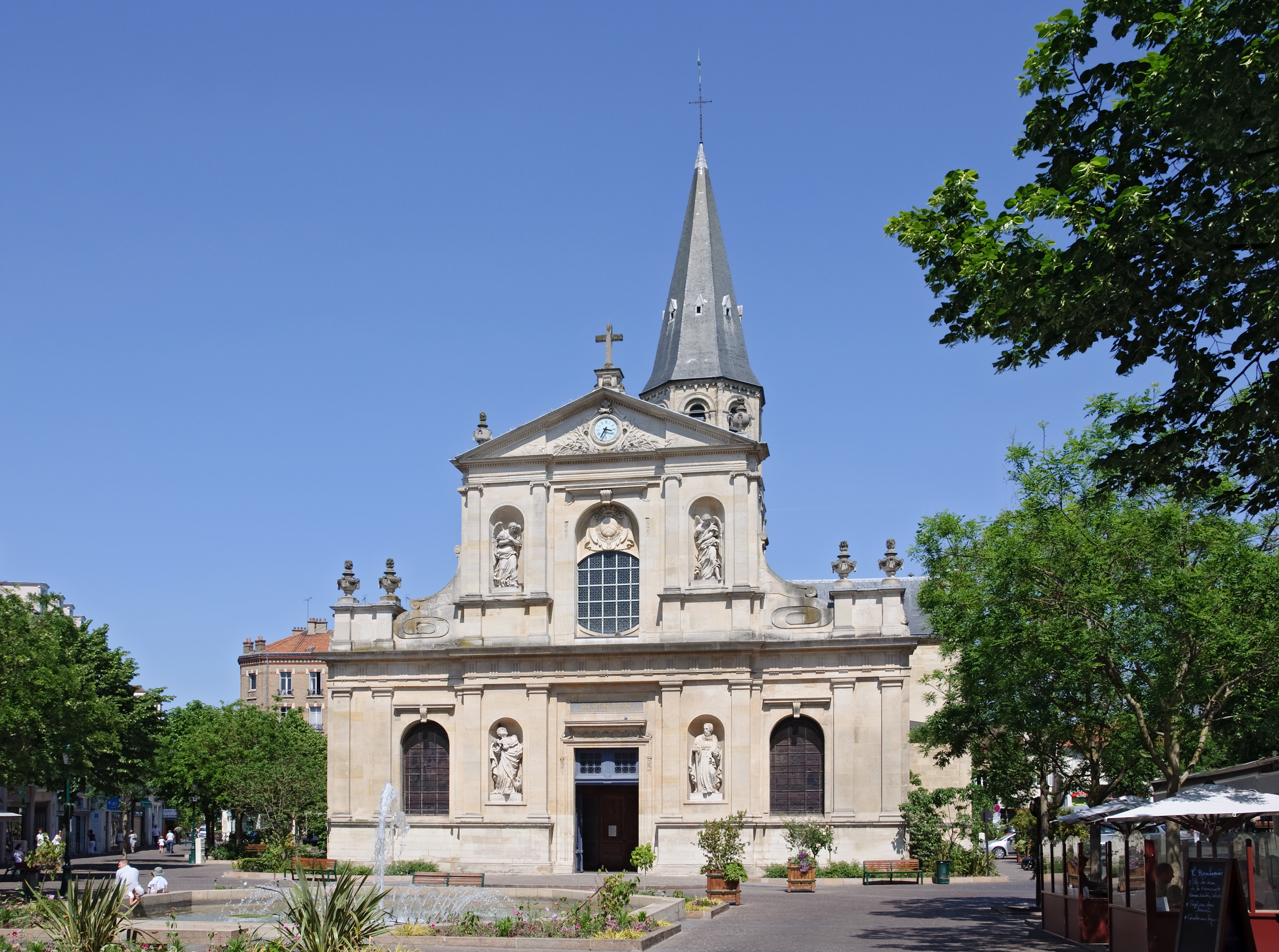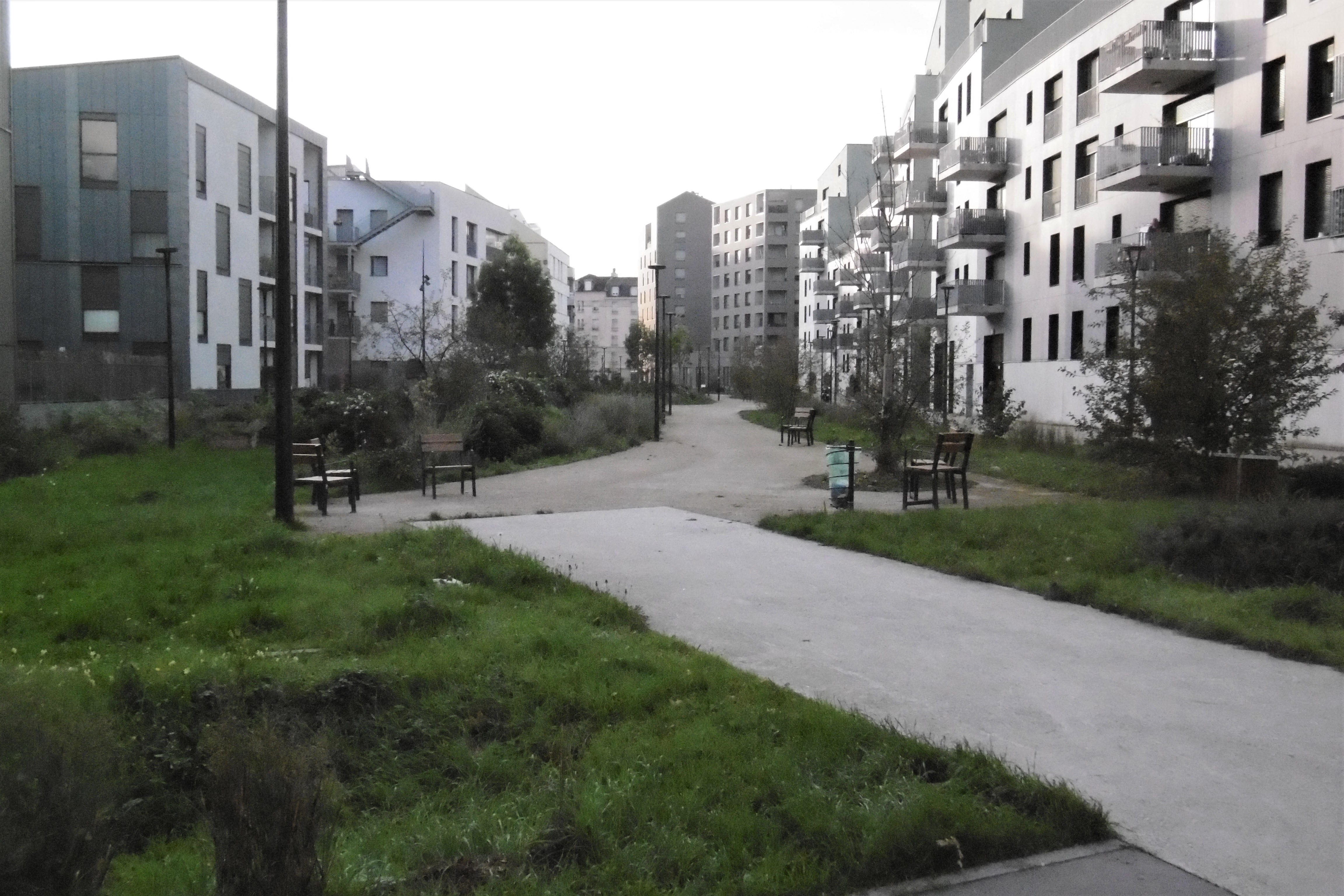|
Hauts-de-Seine
Hauts-de-Seine (; ) is a département in the Île-de-France region, Northern France. It covers Paris's western inner suburbs. It is bordered by Paris, Seine-Saint-Denis and Val-de-Marne to the east, Val-d'Oise to the north, Yvelines to the west and Essonne to the south. With a population of 1,624,357 (as of 2019)Populations légales 2019: 92 Hauts-de-Seine INSEE and a total area of 176 square kilometres (68 square miles), it is the second most highly densely populated department of France after Paris. It is the [...More Info...] [...Related Items...] OR: [Wikipedia] [Google] [Baidu] |
Antony, Hauts-de-Seine
Antony () is a commune in the southern suburbs of Paris, France, from the centre of Paris. Antony is a subprefecture of the Hauts-de-Seine department and the seat of the arrondissement of Antony. Watered by the Bièvre, a tributary of the Seine, Antony is at the crossroads of important transport routes, especially the main north–south axis, which has existed for 2,000 years. Little urbanized until the early 20th century, the city grew considerably between the two wars, under Senator- Mayor Auguste Mounié, from 4,000 to 20,000 inhabitants. In the early 1960s the population quickly increased from 25,000 to 50,000 to accommodate repatriated people from Algeria. Now incorporated in the Paris Metropolitan Area, it is particularly strong in education, with one of the largest private institutions in France, and in health, with the largest private establishment in Île-de-France. The inhabitants of the commune are known as ''Antoniens'' or ''Antoniennes''. The commune has been ... [...More Info...] [...Related Items...] OR: [Wikipedia] [Google] [Baidu] |
Paris
Paris () is the capital and most populous city of France, with an estimated population of 2,165,423 residents in 2019 in an area of more than 105 km² (41 sq mi), making it the 30th most densely populated city in the world in 2020. Since the 17th century, Paris has been one of the world's major centres of finance, diplomacy, commerce, fashion, gastronomy, and science. For its leading role in the arts and sciences, as well as its very early system of street lighting, in the 19th century it became known as "the City of Light". Like London, prior to the Second World War, it was also sometimes called the capital of the world. The City of Paris is the centre of the Île-de-France region, or Paris Region, with an estimated population of 12,262,544 in 2019, or about 19% of the population of France, making the region France's primate city. The Paris Region had a GDP of €739 billion ($743 billion) in 2019, which is the highest in Europe. According to the Economis ... [...More Info...] [...Related Items...] OR: [Wikipedia] [Google] [Baidu] |
Communes Of The Hauts-de-Seine Department
The following is a list of the 36 communes of the Hauts-de-Seine department of France. Since January 2016, all communes of Hauts-de-Seine are part of the intercommunality Métropole du Grand Paris {{Communes of France Hauts-de-Seine Hauts-de-Seine (; ) is a département in the Île-de-France region, Northern France. It covers Paris's western inner suburbs. It is bordered by Paris, Seine-Saint-Denis and Val-de-Marne to the east, Val-d'Oise to the north, Yvelines to the west ... * ... [...More Info...] [...Related Items...] OR: [Wikipedia] [Google] [Baidu] |
Arrondissements Of The Hauts-de-Seine Department
The 3 arrondissements of the Hauts-de-Seine department are: # Arrondissement of Antony, (subprefecture: Antony) with 11 communes. The population of the arrondissement was 396,552 in 2016. # Arrondissement of Boulogne-Billancourt, (subprefecture: Boulogne-Billancourt) with 8 communes. The population of the arrondissement was 318,535 in 2016. # Arrondissement of Nanterre, (prefecture of the Hauts-de-Seine department: Nanterre) with 17 communes. The population of the arrondissement was 888,181 in 2016. History In 1800 the arrondissement of Sceaux was established as part of the department Seine. It was disbanded in 1962. In 1964 the arrondissement of Nanterre was established. The arrondissement of Antony was created in 1966. In 1968 the department Hauts-de-Seine was created from parts of the former departments Seine and Seine-et-Oise, and the arrondissements of Nanterre and Antony became part of it. The arrondissement of Boulogne-Billancourt was created in January 1973. In Ja ... [...More Info...] [...Related Items...] OR: [Wikipedia] [Google] [Baidu] |
Île-de-France
The Île-de-France (, ; literally "Isle of France") is the most populous of the eighteen regions of France. Centred on the capital Paris, it is located in the north-central part of the country and often called the ''Région parisienne'' (; en, Paris Region). Île-de-France is densely populated and retains a prime economic position on the national stage: though it covers only , about 2% of metropolitan French territory, its 2017 population was nearly one-fifth of the national total. The region is made up of eight administrative departments: Paris, Essonne, Hauts-de-Seine, Seine-Saint-Denis, Seine-et-Marne, Val-de-Marne, Val-d'Oise and Yvelines. It was created as the "District of the Paris Region" in 1961. In 1976, when its status was aligned with the French administrative regions created in 1972, it was renamed after the historic province of Île-de-France. Residents are sometimes referred to as ''Franciliens'', an administrative word created in the 1980s. The GDP of the region i ... [...More Info...] [...Related Items...] OR: [Wikipedia] [Google] [Baidu] |
La Garenne-Colombes
La Garenne-Colombes () is a commune in the northwestern suburbs of Paris, France. It is located from Notre Dame de Paris which is the center of Paris. It is one of the most densely populated municipalities in Europe. Name The city used to be part of the neighbouring city of Colombes. At this time, before 1910, it was called "La Garenne de Colombes," which means "Colombes' Garenne." "Garenne" is French for "warren." So the English for "La Garenne-Colombes" could be "Colombes' warren" or "Warren of Colombes"; yet to speakers of all languages the name of the city is officially "La Garenne-Colombes." The explanation for the city being called "warren" is that it used to be a warren where people would hunt. But this dates back to the French monarchy, in the 18th century and before. Geography La Garenne-Colombes is usually simply called "La Garenne", and nicknamed "petit Neuilly". Surroundings Four towns surround La Garenne-Colombes: Colombes (North), Bois-Colombes (East), Courbevo ... [...More Info...] [...Related Items...] OR: [Wikipedia] [Google] [Baidu] |
Meudon
Meudon () is a municipality in the southwestern suburbs of Paris, France. It is in the département of Hauts-de-Seine. It is located from the center of Paris. The city is known for many historic monuments and some extraordinary trees. One of them, the Imperial Cedar (), attracted the attention of Empress Eugénie and Queen Victoria. As of March 2021, the tree is in good condition, but it is threatened by real estate speculation. Another real estate project is planned for the historic park of the Napoleon III villa built by Charles Schacher. Both projects are controversial and have aroused local opposition. Geography The town of Meudon is built on the hills and valleys of the Seine. The wood of Meudon lies for the most part to the west of the town. The north-west part of Meudon, overlooking the Seine, is known as ''Bellevue'' ("beautiful view"). History At Meudon, the argile plastique clay was extensively mined in the 19th century. The first fossil of the European diatryma ... [...More Info...] [...Related Items...] OR: [Wikipedia] [Google] [Baidu] |
Boulogne-Billancourt
Boulogne-Billancourt (; often colloquially called simply Boulogne, until 1924 Boulogne-sur-Seine, ) is a wealthy and prestigious commune in the Parisian area, located from its centre. It is a subprefecture of the Hauts-de-Seine department and thus the seat of the larger arrondissement of Boulogne-Billancourt. Boulogne-Billancourt includes two large islands in the Seine: Île Saint-Germain and Île Seguin. With a population of 121,334 as of 2018, it is the most populous commune in Hauts-de-Seine and most populous suburb of Paris, as well as one of the most densely populated municipalities in Europe. Boulogne-Billancourt is one of the wealthiest regions in the Parisian area and in France. Formerly an important industrial site, it has successfully reconverted into business services and is now home to major communication companies headquartered in the Val de Seine business district. Etymology The original name of the commune was Boulogne-sur-Seine (meaning "Boulogne upon Seine"). ... [...More Info...] [...Related Items...] OR: [Wikipedia] [Google] [Baidu] |
Nanterre
Nanterre (, ) is the prefecture of the Hauts-de-Seine department in the western suburbs of Paris. It is located some northwest of the centre of Paris. In 2018, the commune had a population of 96,807. The eastern part of Nanterre, bordering the communes of Courbevoie and Puteaux, contains a small part of the La Défense business district of Paris and some of the tallest buildings in the Paris region. Because the headquarters of many major corporations are located in La Défense, the court of Nanterre is well known in the media for the number of high-profile lawsuits and trials that take place in it. The city of Nanterre also includes the Paris West University Nanterre La Défense, one of the largest universities in the Paris region. Name The name of Nanterre originated before the Roman conquest of Gaul. The Romans recorded the name as ''Nemetodorum''. It is composed of the Celtic word ''nemeto'' meaning "shrine" or "sacred place" and the Celtic word ''duron'' (neuter) "hard ... [...More Info...] [...Related Items...] OR: [Wikipedia] [Google] [Baidu] |
Rueil-Malmaison
Rueil-Malmaison () is a commune in the western suburbs of Paris, in the Hauts-de-Seine department, Île-de-France region. It is located from the centre of Paris. In 2017, it had a population of 78,152. It is one of the wealthiest suburbs of Paris. Name Rueil-Malmaison was originally called simply Rueil. In medieval times the name Rueil was spelled either , , , , or . This name is made of the Celtic word (meaning 'clearing, glade' or 'place of') suffixed to a radical meaning 'brook, stream' ( la, rivus, fro, rû), or maybe to a radical meaning 'ford' (Celtic ). In 1928, the name of the commune officially became Rueil-Malmaison in reference to its most famous tourist attraction, the Château de Malmaison, home of Napoleon's first wife Joséphine de Beauharnais. The name Malmaison comes from Medieval Latin , meaning 'ill-fated domain', 'estate of ill luck'. In the Early Middle Ages Malmaison was the site of a royal residence which was destroyed by the Vikings in 846. H ... [...More Info...] [...Related Items...] OR: [Wikipedia] [Google] [Baidu] |
La Défense
La Défense () is a major business district in France, located west of the city limits of Paris. It is part of the Paris metropolitan area in the Île-de-France region, located in the department of Hauts-de-Seine in the communes of Courbevoie, La Garenne-Colombes, Nanterre, and Puteaux. La Défense is Europe's largest purpose-built business district, covering , for 180,000 daily workers, with 72 glass and steel buildings (of which 19 are completed skyscrapers), and of office space. Around its Grande Arche and esplanade ("le Parvis"), La Défense contains many of the Paris urban area's tallest high-rises. Les Quatre Temps, a large shopping mall in La Défense, has 220 stores, 48 restaurants and a 24-screen movie theatre. The district is located at the westernmost extremity of the '' Axe historique'' ("historical axis") of Paris, which starts at the Louvre in Central Paris and continues along the Champs-Élysées, well beyond the Arc de Triomphe along the Avenue de ... [...More Info...] [...Related Items...] OR: [Wikipedia] [Google] [Baidu] |
Banlieue
In France, the term banlieue (; ) refers to a suburb of a large city. Banlieues are divided into autonomous administrative entities and do not constitute part of the city proper. For instance, 80% of the inhabitants of the Paris Metropolitan Area live outside the city of Paris. Nevertheless, beginning in the 1970s, the term ''banlieue'' has taken on a particular connotation, becoming a popular word for economically-deprived suburbs featuring low-income housing projects (HLMs) that are home to large immigrant populations. People of foreign descent reside in what are often called poverty traps. History In France, since the establishment of the Third Republic at the beginning of the 1870s, communities beyond the city centre essentially stopped spreading their own boundaries, as a result of the extension of the larger Paris urban agglomeration. The city – which in France corresponds to the concept of the "urban unit" – does not necessarily have a correspondence with a singl ... [...More Info...] [...Related Items...] OR: [Wikipedia] [Google] [Baidu] |







